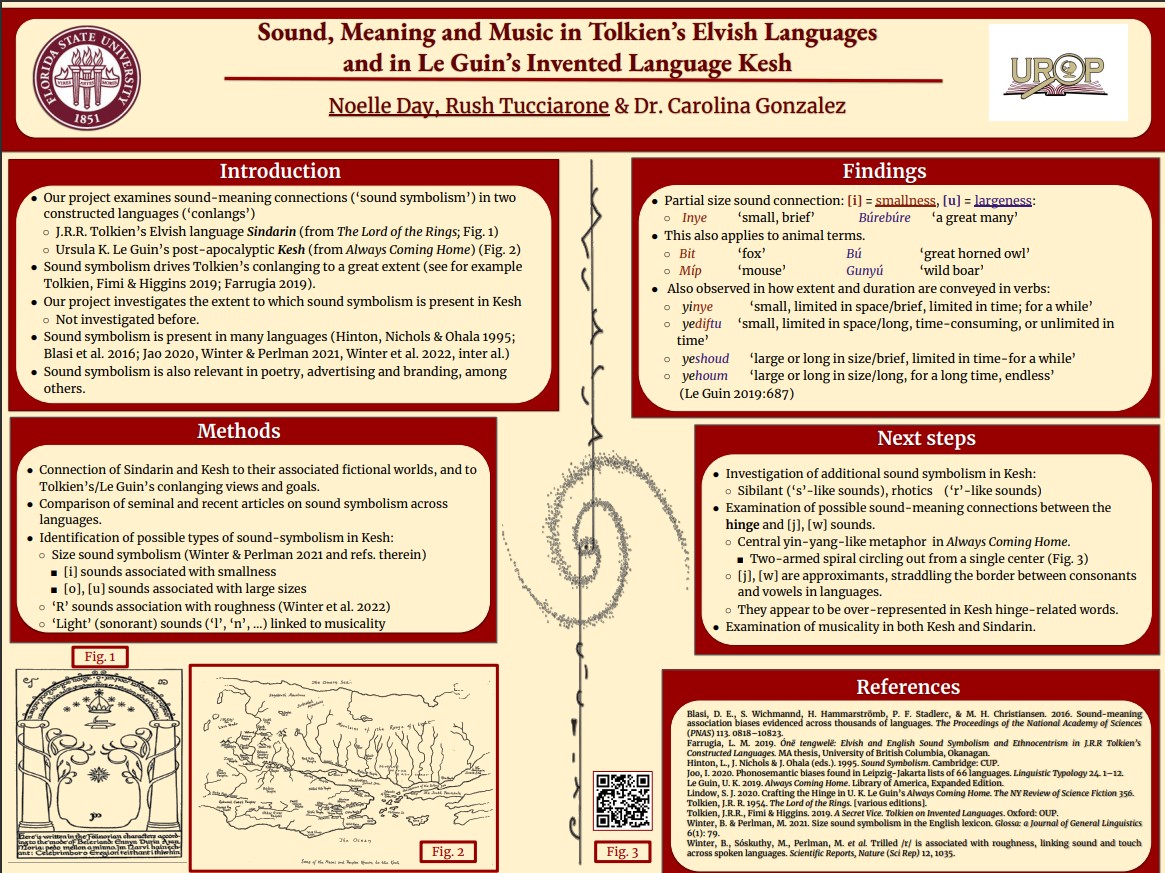Research Symposium
23rd annual Undergraduate Research Symposium, April 6, 2023
Elsie Day Poster Session 4: 4:00 pm - 5:00 pm/ Poster #380

BIO
Hi! I'm a freshman Editing, Writing, and Media major from Orlando. My research interests span across the humanities. I'm always looking to learn more about niche topics I'm not already familiar with, which is what led me to research on conlangs. I've gained a lot of new knowledge on linguistics through my project, which is something I hope to possibly expand upon in the future.
Sound, Meaning and Music in Tolkien's Elvish Languages and in Le Guin's Invented language Kesh
Authors: Elsie Day, Carolina GonzalezStudent Major: Editing, Writing, and Media
Mentor: Carolina Gonzalez
Mentor's Department: Modern Languages and Linguistics Mentor's College: Arts and Sciences Co-Presenters: Rush Tucciarone
Abstract
This project examines the connection between sound and meaning in three invented languages: Kesh, Quenya and Sindarin. Kesh was developed by Ursula Le Guin for her novel Always Coming Home and features in her musical composition Music and Poetry of the Kesh. Quenya and Sindarin are Elvish languages invented by J.R.R. Tolkien for his Middle Earth fictional world, featured in The Hobbit, The Lord of the Rings, and The Silmarilion. These three artistic languages had different linguistic influences, but share the goals of being aesthetically pleasing and highly melodic and musical.
This project examines the euphony and musicality of both authors’ languages in the context of phono-semanticism, i.e., the concept that sounds carry meaning. Linguistic studies show that certain sounds carry meaning associations across several unrelated languages (Hinton et al. 1994; Blasi et al. 2016; Jao 2020, Mompean et al. 2020, inter al.). For example, ‘r’ sounds tend to be present in words conveying roughness across languages (Winter et al. 2021). Building on Farrugia’s (2014) preliminary study of phono-semanticism in Tolkien’s languages, we explore the phonetic similarities of Kesh to those of Elvish languages, and their relative distribution in words conveying musicality, beauty, good, evil, and roughness. This study will advance our understanding of how sound and meaning are connected and used in artistic creations.
Keywords: Linguistics, Conlang, Tolkien, Sound-Symbolism, Quenya, Kesh


